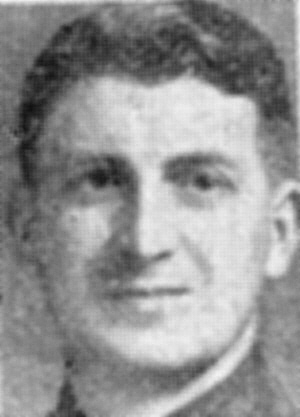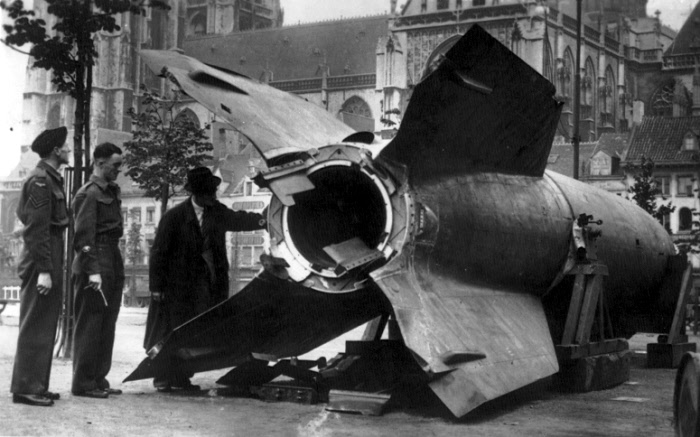
Thomas Arthur Taylor was born in the Doncaster registration area in the spring of 1912, the son of Arthur and Agnes Ann (nee Garbutt) Taylor, who married at St. Giles and St. Mary’s Church, Pontefract on the 25th September 1909. Arthur, born on the 20th December 1883, of 34 Fairfield Street, Pontefract was a police constable and Agnes Ann, born the 5th January 1890 was living at 1, Anderson Street, Pontefract.
In 1911, the couple were living at Grange Buildings, Tingley Common, near Morley with their six months old daughter, Helena Mary, who was born in Pontefract. Stockport born Arthur was a police constable working for the West Riding force. It is not known when the family moved to Ossett, but in September 1939 Arthur and Agnes Taylor were living at 19, Westfield Street, Ossett. Arthur was a retired police officer. Arthur Taylor died in the summer of 1940, aged 55 years.
Thomas Arthur Taylor of 19, Westfield Street Ossett died on war service on the 26th December 1944, when the administration of his estate was granted to his mother, Agnes Ann Taylor, widow. His effects were £419 8s 3d.
The 49th (West Yorkshire Regiment) Garrison Regiment, Royal Artillery (previously 49th (West Yorkshire Regiment) Searchlight Regiment, Royal Artillery (TA), was formed by 6th Battalion West Yorkshire Regiment in 1937.
On September 3rd 1944, Montgomery ordered General Dempsey, head of the British 2nd Army, to occupy Antwerp. The 11th Armoured Division did just this on September 4th. There was some resistance but, with the help of the Belgium Resistance, this was crushed with some ease. It is believed that Bombardier Taylor died during the Battle of the Bulge, when the German army attempted to break out of the Ardennes forest area on the 16th December 1944, with the intention of capturing the now vitally important Allied port of Antwerp. Although the attempt to capture Antwerp ultimately failed, it was a very close run thing.
During December 1944, the Germans launched V1 and V2 rocket raids on Antwerp, where it is believed Taylor was located. Between the start of the V-weapon attacks and the end of 1944, greater Antwerp had recorded 590 direct hits, which had flattened 884 homes and caused around 1,200 others to be uninhabitable. Almost 6,000 buildings were badly damaged and more than 23,000 others were damaged in some manner. Casualty figures stood at 1,736 dead and another 4,500 injured. It seemed that no neighbourhood had escaped the destruction, as piles of debris could be seen everywhere.
As with most Armed Forces Serving Personnel during the conflict of World War Two, Thomas Arthur Taylor was entitled to the War Medal 1939-1945. This medal was awarded to all full time service personnel who had completed 28 days service between 3rd September 1939 and the 2nd September 1945. Eligible personnel who had been “Mentioned In Despatches” during the War were entitled to wear a bronze oak leaf emblem on the ribbon. Those eligible for a campaign star, yet who had their service cut short by death, wounds or capture by the enemy, still qualified for this medal.
Bombardier Thomas Arthur Taylor died on the 26th December 1944, aged 32 years and is buried at grave V. C. 68. in the Schoonselhof Cemetery, Antwerp, Belgium with several of his Royal Artillery colleagues.
Schoonselhof Cemetery contains 101 Commonwealth burials of the First World War, some of which were brought in from other burial grounds in the area after the Armistice (17 of them were brought in from Lierre German Cemetery, 1 from Bouchout-Les-Lierre Churchyard, 3 from the War Plot in Malines Communal Cemetery and 1 from the Casino garden at Lierre). Second World War burials number 1,455. The Commonwealth plot also contains 16 non-war burials, most of them Merchant seamen whose deaths were not due to war service. There is 1 U.S.A. airman attached to the R.A.F., 16 Polish and 1 French burials here.1

Above: Inspecting the remains of a V2 rocket in Antwerp 1944.
References: